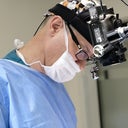I'm not familiar with the Belle filter, but it's rather common that a patient shows me a morph that she made of her own nose, saying "can you make my nose look like this," and we use it as a starting point to see what's possible, what looks best on her face, what she would like best. Or a patient will show me photos of someone else's nose, or some models, and say "I like these noses," and we use the features of the noses she likes to design some morphs that show a surgically-realistic and patient-approved goal for the operation. The Belle filter's probably just an extension of those ways that a patient tells a doctor what she wants. The more info, the better.






